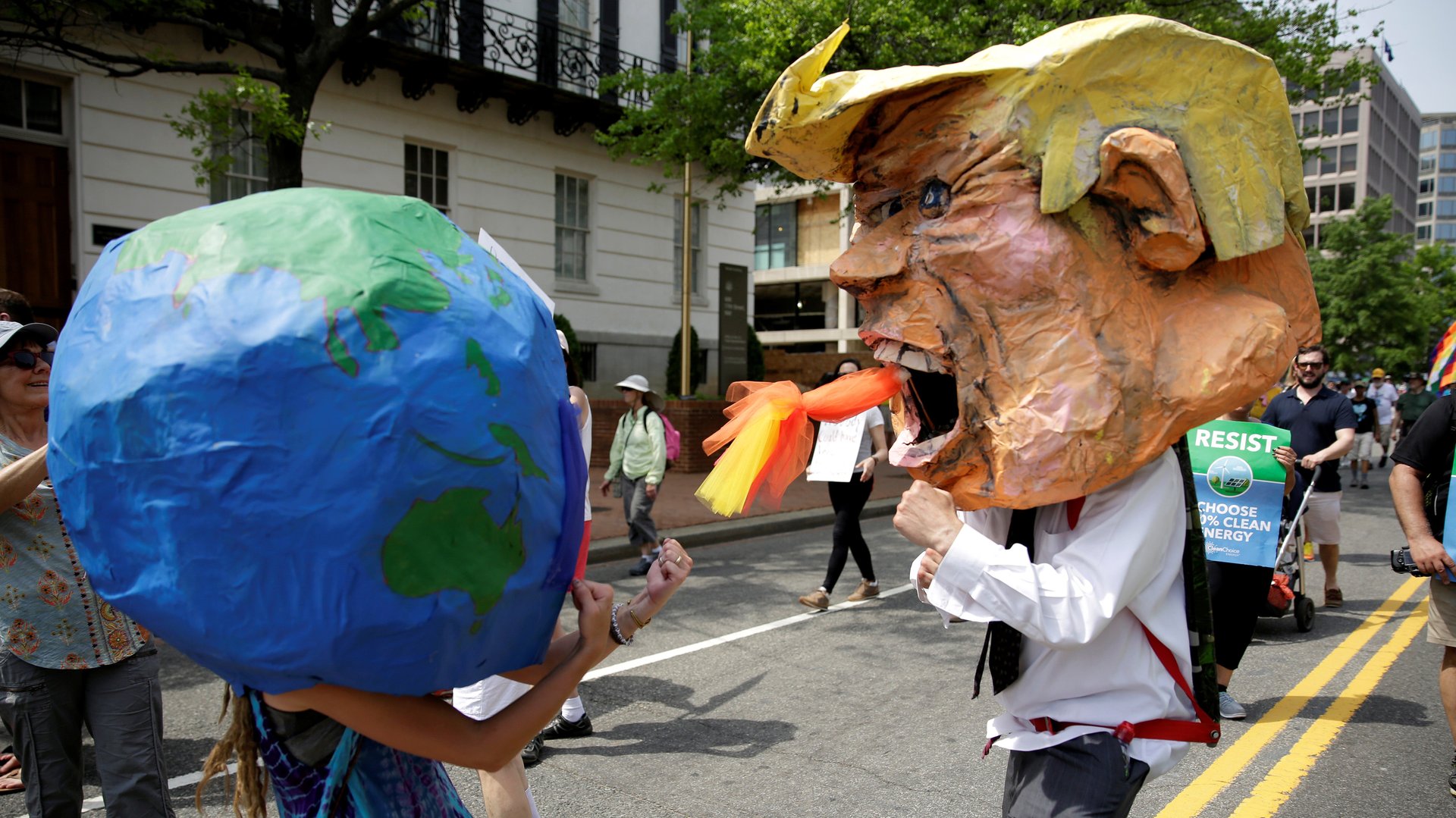Can the Paris climate agreement survive a US withdrawal?
International negotiations are more an art than a science. When the Paris climate agreement was signed in 2015 by 195 countries, it felt as if the UN had finally mastered the art, some 25 years after it began working on it.


International negotiations are more an art than a science. When the Paris climate agreement was signed in 2015 by 195 countries, it felt as if the UN had finally mastered the art, some 25 years after it began working on it.
Now a climate-denying US president has threatened to derail progress and set the UN back by pulling out of the accord.
Though world leaders and global corporations urged Donald Trump to remain in the deal, there are quite a few people who indeed will be relieved to see the US leave. They argue the pact, and by extension the world, would be better off without US involvement in the accord.
To understand why, consider how the Paris agreement works. It lets each country decide its own target to reduce emissions, and assumes the target will be met voluntarily. If a country misses its goal, the only punishment is public shame.
Now put a bully in the ring—and a seemingly shameless one at that—and it’s easy to see how the deal can unravel. It’s clear from Trump’s first four months in power that there’s no way the US can deliver on its initial commitment to the Paris agreement, made during the Obama administration, to cut emissions by 2025 to about a third of what the US emitted back in 2005. When the country fails to make good on that promise and suffers no punishment, it would have weakened an already weak climate treaty. So its mere presence alongside nations following the agreement in good faith arguably would have threatened to undermine the pact’s objective.
“The Paris agreement is not intended as a fig leaf. It is not a branding opportunity, nor is it intended as a platform for lobbying. It is a club for countries who are part of a global effort to tackle dangerous climate change, and who are committed to emissions reductions. The US no longer meets these admission criteria,” writes Joseph Curtin, a member of the Irish government’s Climate Change Advisory Council and a research fellow at University College Cork.
Yes, the US emits about a sixth of all global emissions, and its per-capita emissions are among the highest in the world. Clearly it would be in the rest of the world’s interest to get the US to behave as a responsible neighbor on our pale blue dot. But at what cost?
The Paris agreement is set up such that each country has to renegotiate its goals to reduce emissions every five years. Luke Kemp, a lecturer in environmental policy and international relations at Australian National University, argues that the US, if it had remained a member of the agreement, would have likely played bully and impeded these negotiations.
“The US and the Trump administration can do more damage inside the agreement than outside it,” Kemp suggested in a recent piece for The Conversation.
Of course, no one likes a bully. So when they found one in Trump, the world’s other large emitters—the EU, China, and India—were compelled to reaffirm that they will respect their commitments to the Paris agreement. Beyond mere symbolism, these reminders counter the real risk of other members leaving because the US might. They also suggest there are other governments willing to take on the mantle of climate leadership.
When the US played bully 20 years ago in the negotiations of the Kyoto protocol (a Paris accord precursor, which the US never ratified), the EU took charge and strengthened the rules in the Marrakech accord of 2001, which brought together 164 countries to negotiate the fine print of the Kyoto agreement.
This time around, India and China could take on the role of lead enforcers, in part because these two countries are already ahead of their Paris commitments to cut emissions. That’s all the more reason why a US exit wouldn’t have the same death-knell effect that it seems to have had on another major international pact, the Trans-Pacific Partnership; unlike the Paris agreement, the TPP trade deal lacked an obvious replacement to take on the leadership role vacated by the US.
Of the 195 countries that have signed onto the Paris climate agreement, some 147—representing more than 80% of global emissions—have already ratified or otherwise formally accepted it. Trump, who campaigned saying he would exit the deal, has promised to announce his final decision from the White House Rose Garden at 3pm local time on June 1.
With the US out, it’s down to 146 countries representing more than 65% of all emissions. That’s not ideal for the planet—but it is enough for the Paris agreement to survive.
This post was updated on June 1 at 3.45pm ET after Trump’s decision to withdraw.